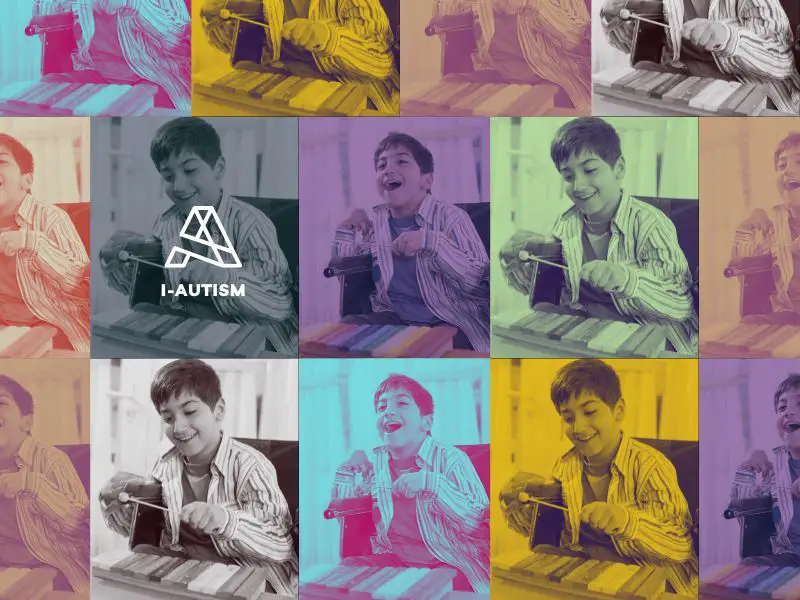Music therapy stands out as a unique and often highly effective intervention for individuals with autism spectrum disorder (ASD). Utilizing the universal language of music, therapists can engage individuals with autism in ways that may be more difficult with traditional verbal communication. The structure, rhythm, and sensory input provided by music can offer a soothing and organized medium for expression, learning, and growth. Let’s explore further how music therapy can benefit those with ASD through specific examples and applications.
Autism and Music Therapy | How they work synergistically
Improving Communication Skills
One of the core challenges for individuals with autism is difficulty with communication. Music therapy offers a non-verbal avenue for expression, allowing individuals to communicate through playing instruments or singing. For instance, a therapist might use a call-and-response technique where the child is encouraged to respond to the therapist’s musical phrase with one of their own. This can help the individual with ASD in turn-taking conversations, maintaining attention, and learning to respond to social cues, which can translate into improved verbal communication over time.
Enhancing Social Interaction
Music therapy sessions can also promote social interaction when conducted in group settings. By playing a simple rhythm in a drum circle, for example, participants must cooperate and listen to one another to create harmony. This social engagement encourages eye contact, joint attention, and the development of relationships, fostering a sense of community and belonging among group members.
Managing Sensory Issues
Individuals with ASD often experience hypersensitivity or hyposensitivity to sensory input. Music therapy can be tailored to help manage these sensory issues. A music therapist might create a calm, predictable musical environment for those who are easily overwhelmed by sensory stimuli, or use more lively, engaging songs and instruments to encourage sensory-seeking behaviors in individuals who respond to heightened sensory experiences. Through exposure to controlled musical elements, individuals can acclimate to sensory variations and learn to regulate their responses.
Developing Motor Skills
Music therapy can also assist in the development of motor skills. Playing instruments, such as a drum or a xylophone, requires coordination and control. For children with ASD, engaging in instrument play with a focus on fine and gross motor skills can improve dexterity, hand-eye coordination, and overall physical movement. Therapists may use rhythmically based exercises to also support motor planning and execution.
Reducing Anxiety and Encouraging Emotional Regulation
For many with autism, managing anxiety and emotions can be challenging. Music therapy can provide a soothing and predictable structure that helps reduce agitation and promote relaxation. Familiar songs or calming melodies can be used to create a sense of safety and familiarity, which can be particularly beneficial during times of stress or transitions. By expressing emotions through music creation or listening, individuals may learn to identify and regulate their feelings more effectively.
In sum, music therapy is an adaptable and powerful tool in the arsenal of treatments for autism spectrum disorder. Through its ability to cut across communication barriers, soothe the senses, and create shared experiences, music therapy is not only therapeutic but also a source of joy for individuals with ASD. By engaging the mind and body, music therapy continues to reveal its capacity to enhance the lives of those on the autism spectrum in remarkable ways.
Autism and Music Therapy | Examples of Music Therapy for Autism
Music therapy is a valuable tool for helping individuals with autism improve communication, social skills, and emotional regulation. Here are some practical examples of music therapy techniques used to support children and adults with autism:
1. Interactive Music Sessions
- Group Drumming: Children and adults participate in group drumming sessions where they play rhythms together. This fosters social interaction and cooperation.
- Singing Songs: Singing familiar songs encourages verbal expression and can help with language development. Therapists may use songs with repetitive phrases and simple melodies to engage clients.
2. Instrument Play
- Percussion Instruments: Using instruments like tambourines, maracas, and xylophones allows clients to explore sounds and rhythms. This can improve motor skills and provide sensory stimulation.
- Piano or Keyboard: Playing simple melodies on a piano or keyboard helps with fine motor coordination and can be a form of self-expression.
3. Music and Movement
- Dance and Movement: Therapists use music to guide movement activities, helping clients with body awareness, coordination, and following instructions.
- Action Songs: Songs with corresponding actions, like “If You’re Happy and You Know It,” encourage physical participation and can enhance understanding of body parts and movements.
4. Improvisation
- Musical Storytelling: Clients create musical stories using instruments and their voices. This can enhance creativity and provide an outlet for emotional expression.
- Call and Response: Therapists play a musical phrase, and clients respond with their own phrase. This activity promotes listening skills and turn-taking.
5. Structured Music Activities
- Music Games: Games like musical chairs or freeze dance incorporate music with fun activities, teaching social rules and promoting engagement.
- Rhythm Matching: Clients match rhythms played by the therapist using drums or clapping. This helps with attention, memory, and pattern recognition.
6. Music-Assisted Relaxation
- Listening to Calming Music: Therapists use calming, instrumental music to help clients relax and reduce anxiety. Guided imagery may be incorporated to enhance the experience.
7. Songwriting and Lyric Analysis
- Creating Original Songs: Clients write their own songs, which can be a powerful way to express feelings and thoughts. Therapists help with structuring lyrics and melodies.
8. Use of Technology
- Music Apps and Software: Utilizing apps and software designed for music creation allows clients to compose and produce their own music, fostering creativity and technical skills.
- Virtual Music Sessions: Online music therapy sessions provide access to therapy for those who cannot attend in person, using video conferencing and digital instruments.
9. Parent and Caregiver Involvement
- Home Practice: Therapists provide families with musical activities to practice at home, reinforcing skills learned in therapy sessions.
- Family Music Sessions: Involving family members in music therapy sessions can strengthen family bonds and support the client’s progress.
Music therapy is a powerful and versatile intervention for individuals with autism spectrum disorder (ASD). It leverages the universal language of music to address core challenges associated with autism, such as communication deficits, social interaction difficulties, sensory sensitivities, and emotional regulation. By engaging individuals with ASD in structured and creative musical activities, therapists can foster growth, learning, and emotional well-being. Below, we expand on the benefits of music therapy for autism, providing additional insights, examples, and strategies.
The Science Behind Music Therapy and Autism
Research has shown that music therapy can activate multiple areas of the brain, including those involved in emotion, memory, and motor control. For individuals with autism, music can serve as a bridge to communication and social interaction, as it often bypasses the challenges associated with verbal language. The rhythmic and predictable nature of music provides a sense of structure and safety, which can be particularly comforting for individuals with ASD.
Key Benefits of Music Therapy for Autism
- Enhances Neural Connectivity: Music stimulates brain regions involved in auditory processing, language, and social interaction, promoting neural plasticity.
- Reduces Stress and Anxiety: The calming effects of music can lower cortisol levels and promote relaxation.
- Improves Attention and Focus: Rhythmic patterns and melodies can help individuals with ASD maintain attention during tasks.
- Encourages Emotional Expression: Music provides a safe outlet for expressing emotions that may be difficult to articulate verbally.
Advanced Music Therapy Techniques for Autism
While basic techniques like drumming and singing are effective, advanced music therapy strategies can further enhance outcomes for individuals with ASD. Here are some innovative approaches:
1. Neurologic Music Therapy (NMT)
NMT is an evidence-based approach that uses music to target specific neurological functions. For individuals with autism, NMT can improve speech, motor skills, and cognitive abilities. Examples include:
- Melodic Intonation Therapy (MIT): Using singing to improve speech production in non-verbal or minimally verbal individuals.
- Rhythmic Auditory Stimulation (RAS): Using rhythm to improve gait and motor coordination.
2. Improvisational Music Therapy
Improvisation allows individuals with ASD to express themselves freely through music. Therapists may use instruments or vocal improvisation to encourage creativity and emotional release. For example:
- Musical Dialogue: The therapist and client engage in a back-and-forth musical conversation, promoting social interaction and turn-taking.
- Soundscapes: Clients create their own musical environments using a variety of instruments, fostering sensory exploration and self-expression.
3. Music-Assisted Relaxation and Mindfulness
Combining music with relaxation techniques can help individuals with ASD manage anxiety and stress. Examples include:
- Guided Imagery with Music: Clients listen to calming music while visualizing a peaceful scene, promoting relaxation and emotional regulation.
- Breathing Exercises with Music: Therapists use slow, rhythmic music to guide deep breathing exercises, helping clients calm their nervous system.
4. Technology-Enhanced Music Therapy
Incorporating technology into music therapy can make sessions more engaging and accessible. Examples include:
- Digital Music Production: Using software like GarageBand or Ableton Live to create and edit music, fostering creativity and technical skills.
- Interactive Music Apps: Apps like Singing Fingers or Loopimal allow clients to create music through touch and movement, making therapy more interactive and fun.
Case Studies: Applications of Music Therapy for Autism
Case Study 1: Improving Communication in a Non-Verbal Child
- Client: A 6-year-old boy with non-verbal autism.
- Intervention: The therapist used Melodic Intonation Therapy (MIT) to encourage vocalization. By singing simple phrases and encouraging the child to mimic the melody, the child began to produce sounds and eventually words.
- Outcome: After six months of therapy, the child was able to use short phrases to communicate basic needs, such as “I want juice.”
Case Study 2: Enhancing Social Skills in a Teenager
- Client: A 14-year-old girl with autism who struggled with social interactions.
- Intervention: The therapist facilitated group drumming sessions, where the teen had to coordinate her playing with others. Over time, she learned to make eye contact, take turns, and respond to social cues.
- Outcome: The teen reported feeling more confident in social settings and began participating in group activities at school.
Case Study 3: Managing Sensory Overload in an Adult
- Client: A 25-year-old man with autism who experienced severe sensory overload in noisy environments.
- Intervention: The therapist used music-assisted relaxation techniques, including listening to calming instrumental music and practicing deep breathing exercises.
- Outcome: The client reported a significant reduction in anxiety and was able to tolerate previously overwhelming environments, such as crowded public spaces.
Integrating Music Therapy into Daily Life
Parents and caregivers can incorporate music therapy principles into daily routines to reinforce skills and promote well-being. Here are some practical tips:
1. Create a Musical Environment
- Play calming music during transitions or stressful times, such as before bedtime or during car rides.
- Use music to signal routines, like a specific song for brushing teeth or getting dressed.
2. Encourage Musical Play
- Provide access to simple instruments, such as drums, shakers, or keyboards, and encourage exploration.
- Sing songs together and incorporate movement, such as clapping or dancing.
3. Use Music to Teach Skills
- Create songs to teach social skills, such as greetings or sharing.
- Use rhythm to teach sequencing and routines, like steps for washing hands.
4. Practice Music-Assisted Relaxation
- Set aside time each day to listen to calming music and practice deep breathing or mindfulness exercises.
- Use guided imagery with music to help your child relax before bed.
The Role of Music Therapy in School Settings
Music therapy can be a valuable addition to a child’s Individualized Education Program (IEP). Here’s how schools can incorporate music therapy:
1. Individual Music Therapy Sessions
- Provide one-on-one sessions with a certified music therapist to address specific goals, such as improving communication or reducing anxiety.
2. Group Music Therapy
- Facilitate group sessions to promote social interaction and teamwork. Activities like drum circles or choir singing can foster a sense of community.
3. Classroom Integration
- Use music to support learning, such as singing math facts or using rhythm to teach reading skills.
- Incorporate music into sensory breaks to help students regulate their emotions and focus.
4. Staff Training
- Train teachers and support staff on how to use music as a tool for engagement and behavior management.
Challenges and Considerations in Music Therapy
While music therapy offers numerous benefits, there are some challenges to consider:
- Individual Preferences: Not all individuals with autism respond to music in the same way. It’s important to tailor interventions to each person’s preferences and sensitivities.
- Access to Services: Music therapy may not be readily available in all areas, and costs can be a barrier for some families.
- Integration with Other Therapies: Music therapy should be part of a comprehensive treatment plan that includes other interventions, such as speech therapy or occupational therapy.
Music therapy offers a wide range of techniques and activities that can be tailored to meet the individual needs of clients with autism. By engaging in these musical experiences, clients can develop crucial skills, enhance their well-being, and find joy in the process.
Future Directions in Music Therapy for Autism
As research continues to explore the benefits of music therapy for autism, new innovations and approaches are emerging. Some promising areas include:
- Virtual Reality (VR) Music Therapy: Combining VR with music therapy to create immersive, multisensory experiences.
- Personalized Music Interventions: Using AI and machine learning to create customized music therapy programs based on individual needs and preferences.
- Community-Based Music Programs: Expanding access to music therapy through community centers, schools, and online platforms.
Music therapy is a transformative intervention for individuals with autism spectrum disorder, offering a unique blend of creativity, structure, and emotional expression. By addressing core challenges such as communication, social interaction, and sensory sensitivities, music therapy can enhance the quality of life for individuals with ASD and their families. Whether through individual sessions, group activities, or daily routines, the power of music can unlock new possibilities for growth, connection, and joy.
If you’re considering music therapy for yourself or a loved one with autism, consult with a certified music therapist to develop a personalized plan that meets your specific needs. With the right support, music can become a lifelong source of healing and empowerment.



